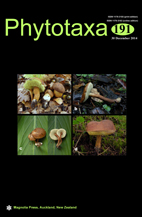Abstract
A taxonomic revision of the family Chenopodiaceae in Nepal with new diagnostic keys, descriptions and detailed distribution patterns is here presented for the first time. 24 species from 13 genera are reported. The apophytes in Himalaya are found in both ruderal and segetal plant communities in contrast to Chenopodiaceae in temperate parts of Eurasia which prefer ruderal places only. The Himalaya and West Tibet are considered to be the regions with the greatest taxonomic diversity of native Dysphania in Eurasia. Chenopodium perttii is described as new for science, and its differences from other related taxa are described, including its unique minute-papillate (almost smooth when dry) pericarp. C. bengalense seems to be an older name for the taxa known as C. giganteum or C. album subsp. amaranticolor. The lectotypes of Chenopodium giganteum, C. album subsp. yunnanense, C. aristatum f. muticum (here synonymized with Dysphania kitiae) and Microgynoecium tibeticum are designated. Both lectotype and epitype for Atriplex bengalensis (basionym of C. bengalense), C. giganteum and the re-instated species C. pallidum are designated.

